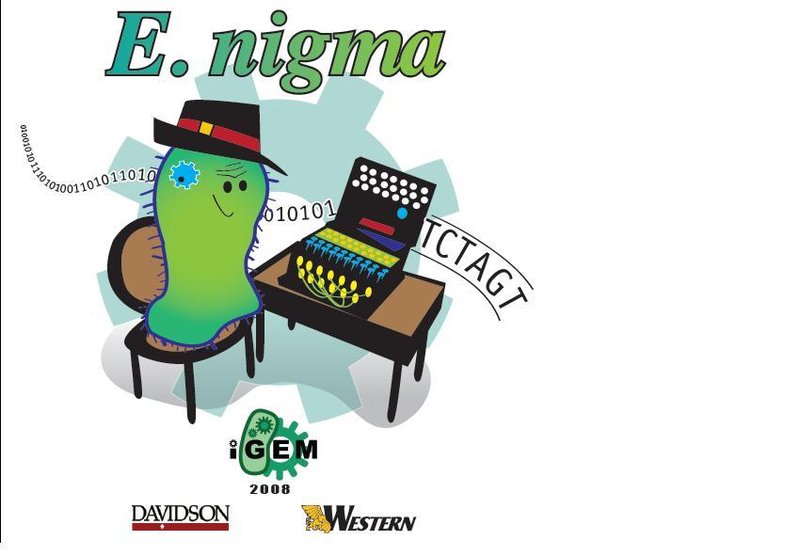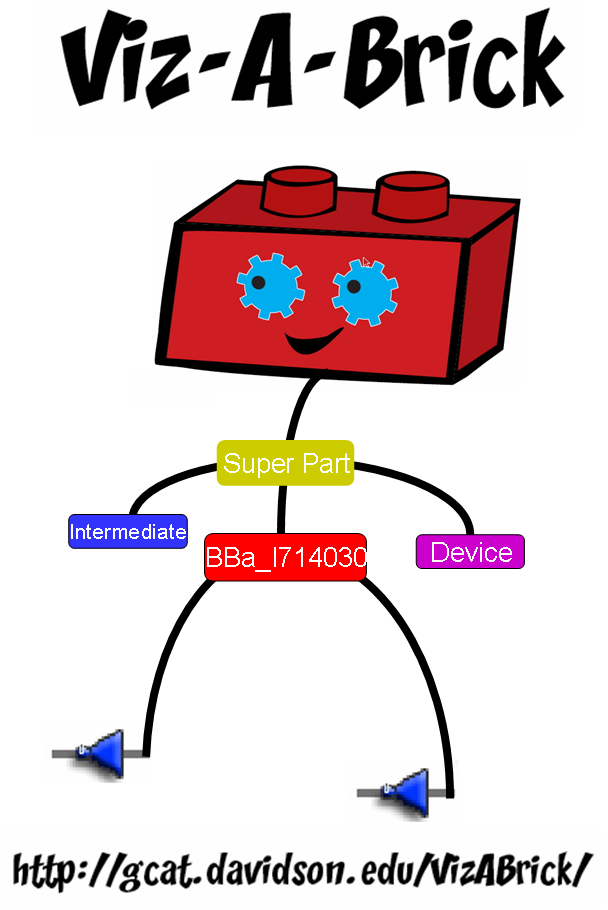Team:Davidson-Missouri Western
From 2008.igem.org
| Line 12: | Line 12: | ||
E. nigma: XOR Gates, a Bacterial Hash Function, and Viz-A-Brick | E. nigma: XOR Gates, a Bacterial Hash Function, and Viz-A-Brick | ||
| - | Our team designed, modeled, and constructed a bacterial computer that uses XOR logic to compute a cryptographic hash function. Hash functions are used to authenticate the integrity of a document by computing its digital fingerprint | + | Our team designed, modeled, and constructed a bacterial computer that uses XOR logic to compute a cryptographic hash function. Hash functions are used to authenticate the integrity of a document by computing its digital fingerprint. Our bacterial computers are designed to recognize the presence or absence of two chemical signals via intercellular communication. Mathematical modeling of these computers has shown that our hash functions are difficult to corrupt. We designed and built a number of new parts, and improved and gained experience on existing parts. We also produced a graphical interface for exploring the Registry of Standard Biological Parts called Viz-A-Brick, and other web-based tools to improve the construction of new parts with BioBrick ends. |
Revision as of 20:14, 28 October 2008
Davidson College - Missouri Western State University
iGEM 2008
Project Abstract
E. nigma: XOR Gates, a Bacterial Hash Function, and Viz-A-Brick
Our team designed, modeled, and constructed a bacterial computer that uses XOR logic to compute a cryptographic hash function. Hash functions are used to authenticate the integrity of a document by computing its digital fingerprint. Our bacterial computers are designed to recognize the presence or absence of two chemical signals via intercellular communication. Mathematical modeling of these computers has shown that our hash functions are difficult to corrupt. We designed and built a number of new parts, and improved and gained experience on existing parts. We also produced a graphical interface for exploring the Registry of Standard Biological Parts called Viz-A-Brick, and other web-based tools to improve the construction of new parts with BioBrick ends.
Highlights
New Parts Contributed to the Registry - we designed, built, and contributed 105 new parts to the Registry
Experience gained on new registry parts - we measured the function of several of the new parts we designed, and some expectations were met
Improvement of pre-existing registry parts - we redesigned the lac promoter and the lac repressor and measured an improvement in their functions
Online tools that support the design of new biobrick parts - we created online tools to aid in part design
Viz-A-Brick: A new way to visualize the registry - we created a new interface to the Registry that addresses Human Practice issues associatated with navigating the expanding Registry
E. nigma Project - we designed and constructed several systems for using logic gates to compute hash functions in bacteria
iGEM 2008 powerpoint presentation
iGEM 2008 poster
| Home | The Team | The Project | Parts Submitted to the Registry | Modeling | Notebook |
|---|
(Or you can choose different headings. But you must have a team page, a project page, and a notebook page.)
 "
"

